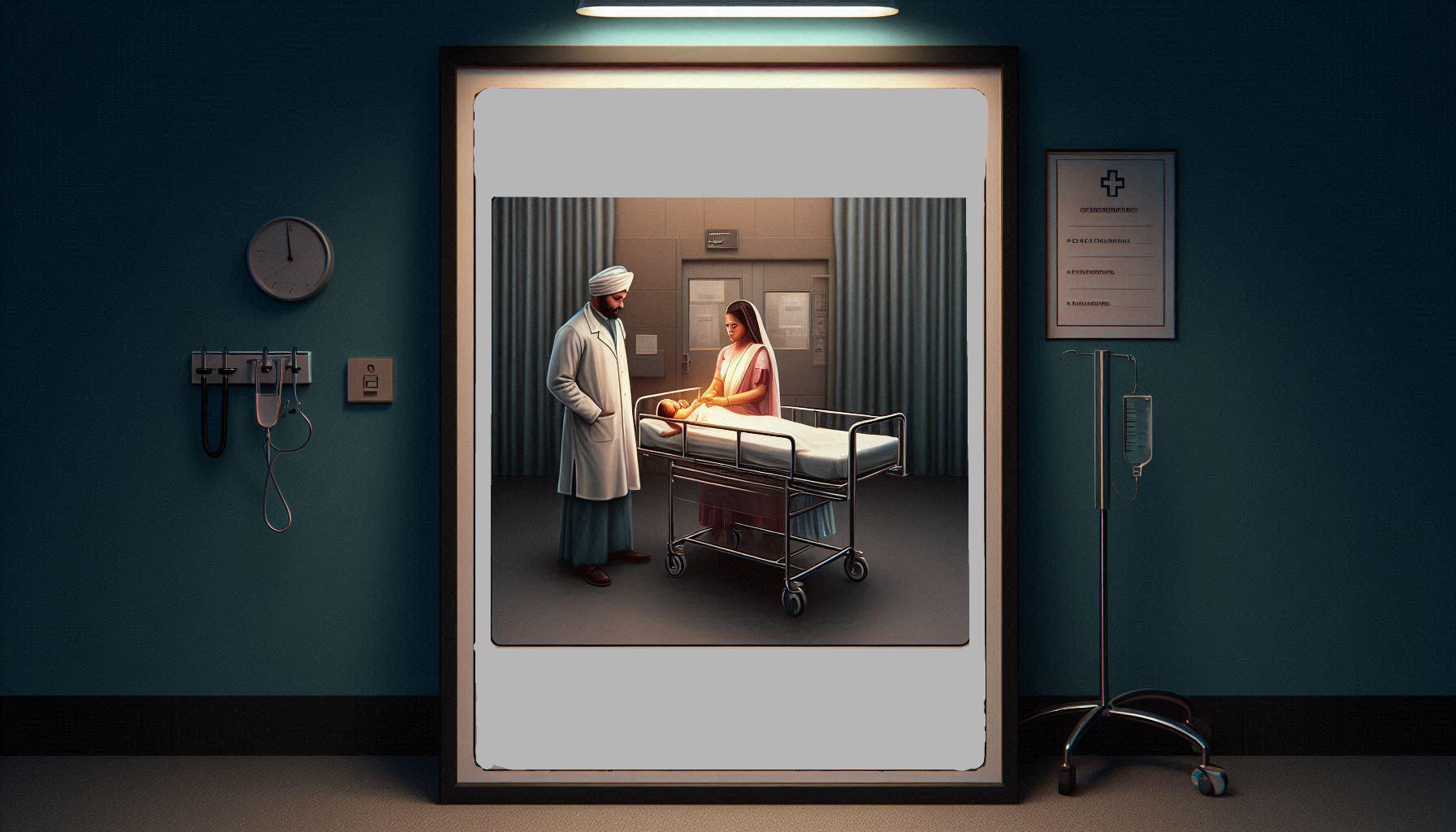In the heart of a bustling Indian city, where the aroma of spices mingles with the daily honking, shouting, and general chaos, a young woman named Priya stands on the brink of a decision so monumental, it could make even the gods break out in a sweat. Her hands rest protectively over her swollen belly, cradling the life within—a life that teeters on the edge of existence, all depending on one crucial, potentially damning detail: it’s a girl.
Chapter 1: The Whispers of Fate
Priya’s story is the kind of saga that would have Shakespeare nodding in approval, except it’s far more tragic and a lot less poetic. It’s the tale of a nation still stuck in a time warp, where progress is measured in megabytes, but minds remain firmly entrenched in the Middle Ages. Economist Amartya Sen pointed out the scandal of missing women in Asia back in 1990—100 million to be exact. Fast forward to 2018, and India alone had managed to lose 63 million. Clearly, if there were a world championship for this, India would be in the finals every time.
As Priya makes her way through the narrow streets, each step feels like she’s carrying not just her own unborn child, but the weight of an entire culture’s backwardness. “Raising a daughter is like watering your neighbor’s garden,” the saying goes. Because why wouldn’t you want to invest your life savings and sanity into nurturing someone else’s lawn? That’s the kind of logic we’re dealing with here. Every corner she turns reminds her of the financial black hole that’s her daughter’s potential dowry, the wedding costs that could bankrupt a small country, and the ever-present threat of “dishonor” that looms like a cloud of impending doom.
Chapter 2: The Invisible Hand
And then there’s the small, unassuming clinic on the outskirts of town. It might look like just another dreary establishment where joy goes to die, but inside, it’s practically a shrine to modern technology’s darker side. Here, the ultrasound machine hums to life like the opening chord of a horror movie, signaling that it’s time to play “Who Wants to Be a Girl?”—a game where the losers don’t get a consolation prize, they just stop existing altogether. The fact that the production of these machines in India jumped by a staggering 3,300% between 1989 and 2003? Well, that’s just good old entrepreneurial spirit, capitalizing on a market where demand is terrifyingly high.
Priya lies on the examination table, her heart racing faster than the speed at which logic flies out the window when tradition takes the wheel. The technician, whose face could double as a poker player’s, stares at the screen, where the grainy image of a tiny human is displayed. And in that split second, science and tradition lock horns, while the future of Priya’s unborn child dangles in the balance, waiting to be decided by a simple nod or shake of the head.
Chapter 3: The Echoes of Absence
As the sun dips below the horizon, casting long shadows over a city that never sleeps but desperately needs a nap, the consequences of decisions like Priya’s begin to creep into view. Groups of young men gather in the streets, their laughter tinged with an undercurrent of desperation. They’re the unlucky winners in the Great Gender Imbalance Sweepstakes—bachelors in a land where daughters are vanishing faster than logic at a political rally.
Meanwhile, in the darker alleys of society, a new trade is booming. Women and girls, often from the most impoverished and marginalized backgrounds, are trafficked like commodities in a black market fueled by scarcity. And while we’re here, let’s talk price tags—5,000 to 100,000 rupees for a bride. For fuck’s sake.
Chapter 4: Voices in the Wilderness
But amidst the despair, there’s a flicker of hope. It’s fragile, like a candle in a windstorm, but it’s there. Enter Sania Mirza, tennis star and billboard queen, her face plastered across Punjab with a slogan that reads, “Your daughter could be the next champion.” It’s the kind of rallying cry that makes you want to fist-pump the air, even if you’re just mildly optimistic.
In dusty, forgotten villages, NGO workers march on, armed not with weapons but with information—far more dangerous in these parts. They talk about education, women’s rights, and the radical idea that maybe, just maybe, daughters could be as valuable as sons. Meanwhile, in the corridors of power, lawmakers struggle with the enormity of the task ahead. Laws are passed, campaigns are launched, and slogans like “Beti Bachao, Beti Padhao” (Save the daughter, Educate the daughter) start to echo through the land. Whether they’re making a difference or just adding to the noise remains to be seen.
Epilogue: The Choice
As night descends and the city below twinkles with lights—each one a story, a life, a possibility—Priya stands by her window, still cradling her belly. The silence of the moment is deafening, a stark contrast to the chaos outside. In this brief respite, she feels the pull of tradition, the weight of history, and a faint whisper of a future that could be different.
Tomorrow, she’ll make her choice. And that choice will ripple through time, affecting not just her unborn child, but an entire nation grappling with an age-old injustice. Will she be one of the countless Priyas who choose silence? Or will her decision be the one that finally breaks the cycle, allowing the echoes of silence to be replaced by the joyous cries of daughters who are welcomed, not just tolerated?
As the night deepens, millions of Priyas across India stand at this very crossroads. Their collective decisions will shape the future of a nation and determine whether the echoes of silence will finally be broken by the joyous cries of daughters welcomed into the world.

